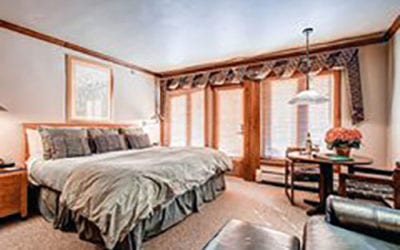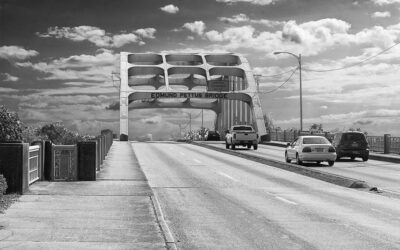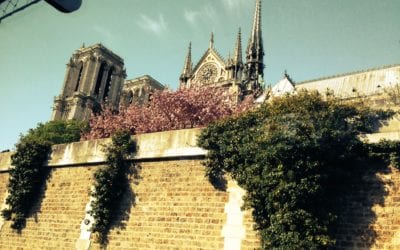(Originally published on www.highonadventure.com)
Bachelor Butte, as it was known in the early day before gaining “Mount Bachelor” status, had opened a half-dozen years earlier. I got to play hooky with my Dad and his skiing friends years ago. They worked hard all week, taught skiing every weekend from November to April, and if they scrounged up a few days or a week to explore unfamiliar terrain, they searched for adventure. I don’t recall how I snagged an invite on this trip, but I found myself finally permitted into their hallowed club.
It was pretty much white-out conditions, but since it would be another decade-and-a-half before there was a lift to the summit accessing above-treeline slopes, we had no problem weaving powdery tracks down forest-lined runs. Forty-plus years later I don’t recall much else about that day.
Since then, I have had the opportunity to return repeatedly to enjoy the lighter, drier and long-lasting snow that has made the resort a destination for skiers and snowboarders.

despite the notoriety the Cascade Mountain Range has for “Cascade Concrete” conditions, Mt. Bachelor is tucked into the eastern slopes of Oregon’s Cascades. Thus, it is blessed with a lighter and drier snowfall than most of the Pacific Northwest resorts.

Just east of the Northwest territory, a kaleidoscope of somewhat mellower runs undulate off the Outback Express, providing a bit of relief to my over-indulged legs. I avoid Down Under, often ungroomed and carpeted with moguls, and cruise my way along Kangaroo and Bushwacker.

Beginners are charmed by the gentle slopes at Mt. Bachelor, with green-level runs descending from every lift except the Summit, Northwest and Outback chairs. The Sunshine Accelerator chair is heaven for neophytes.
Occasional high winds and/or lack of visibility can close down the Summit lift, but if it is open, a trip to the top is a definite must-do. To the west sits Mt. Washington, seemingly endless wilderness, and countless high alpine lakes as far as you can see. Marching northward are Broken Top, the Three Sisters, Mt. Jefferson and Mt. Hood. To the east unfolds the high desert country of central Oregon. To the south sit Paulina Peak, Mt. Thiesen and Crater Lake, and Mt. Shasta just across the California border. The view has been described as “one of the most spectacular photo ops in North American skiing.”

A 150-foot hike from the top of the Summit Express accesses the Cirque, a massive bowl with 1,000 feet of vertical, created when the volcano collapsed in upon itself about 6,000 years ago. It starts with a 50+ degree drop between the spires of the Pinnacles, then levels to a mere 30 degrees: an adrenaline junkie’s delight.

Small to medium sized jumps and rails are located in Lower Chipper. Intermediate to advanced riders head to iPark and Pats Way off the same lift. Folks just starting to test their mettle test themselves in Sunshine Park, accessible from the Sunshine chair.
A number of warming shelters along the cross country trails, stocked with firewood, provide a hospitable respite. The nordic offerings are so diverse, cross country teams from around the world have come here to train.
Lift passes are priced on a sliding scale depending on predicted weather conditions combined with how many lifts and how much terrain will be open. The price is set the day prior, which means an overnight dump that opens more trails or a weather system that diverts around the mountain is an unexpected bonus to the pocketbook.
Day lodges are located in three base areas and mid-mountain, and all except the Junior Race Center offer food and beverage service. The Sunrise Lodge features repair and rental shop, ski school, restrooms, lockers, first aid and a small parking lot. The Junior Race Center contains restrooms, lockers and some parking. West Village Lodge houses ski school, restrooms, lockers, daycare, first aid, and among its foodie offerings is the popular Clearing Rock bar providing a great view of the mountain.
Also in the West Village are the Ski & Sport Center with shops, food service, rentals and repair, the Guest Services Building with tickets, restrooms and lockers, and the Mountain Medical Clinic. Ski corrals are located at all lodges except the Cross Country center.
For a change of pace, head to the Snowblast Tubing Park where two tows transport you and your tube to the top of an eight-lane arena, with adult and child-size tubes available for rent. A fun and informative way to learn about the local flora and fauna is to join a U.S. Forest
Service naturalist for a complimentary one mile Snowshoe Nature Walk, snowshoes included.
A lot has changed in the decades since my first introduction to this mountain. I returned to attend regional instructor clinics and ski writer meetings, to ski with friends and family, and snowmobile the trails surrounding the mountain. I discovered new treasures as additional lifts were added, expanding the boundaries of the resort far to the east and the west. And although each trip has been memorable in its own way, none hold quite the magic of that first road trip with a carload of ski teachers on a busman’s holiday.

Cross country trails are open 8:30-4:00 weekdays (8:00am on weekends), 56km machine-groomed track. Nordic terrain is rated 5% green-beginner, 69% blue-intermediate and 26% black-expert. Information 541-382-2442, Snowphone 541-382-7888, Reservations 800-829-2442, web site www.MtBachelor.com.
Originally published on www.highonadventure.com




